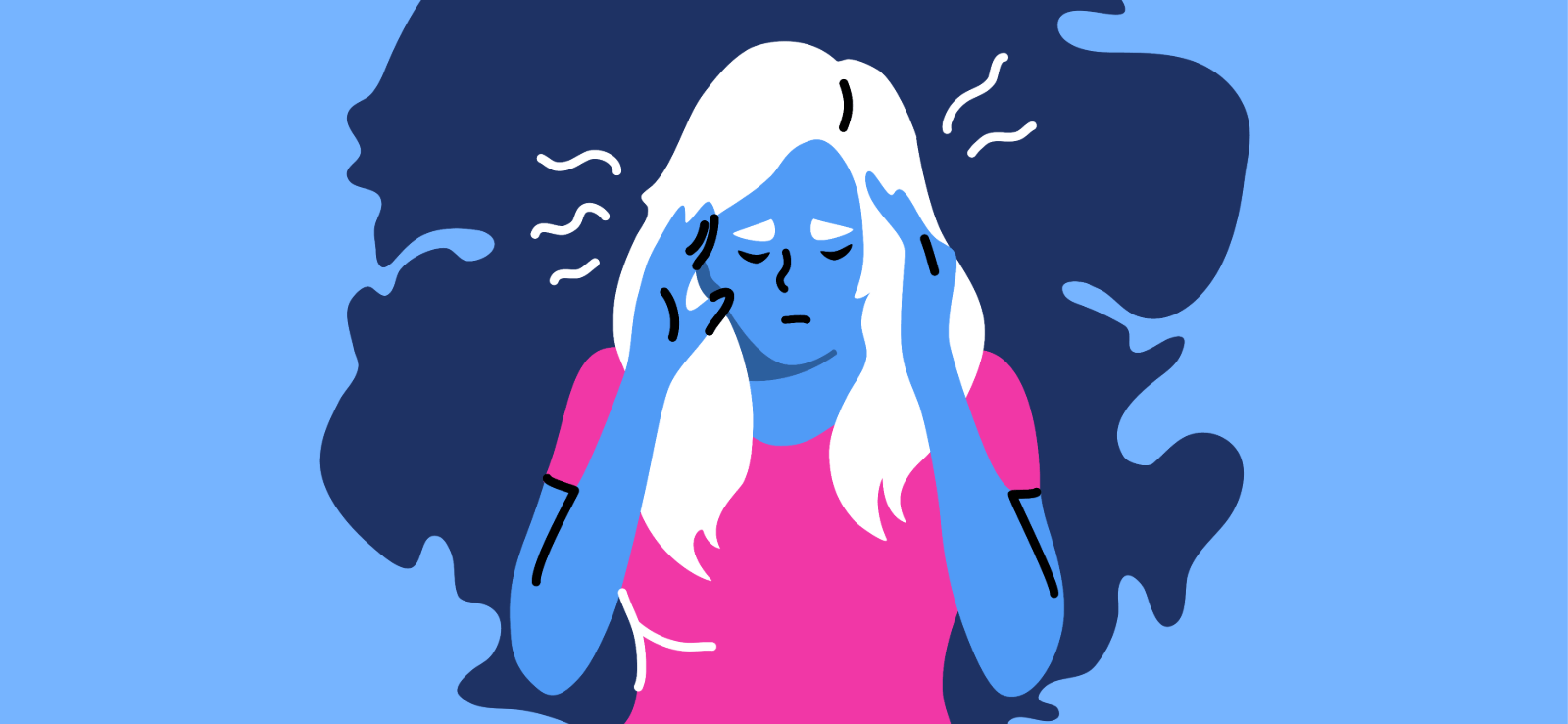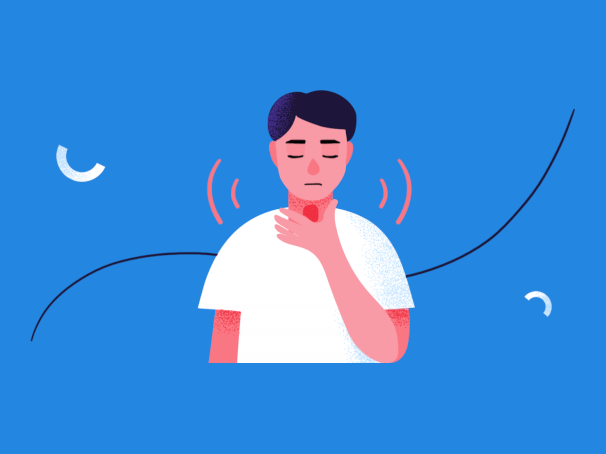
Even when you know a thought isn't rational – when you know that you're worried for no apparent reason – a scary thought can make it very difficult to enjoy your day. Scary thoughts are thoughts that are by their very nature distressing, and when they occur it can be very difficult to push the thought away.
Anxiety commonly causes all types of weird and scary thoughts, because anxiety changes the way that your brain interprets and stores information. In this article, we'll look at how anxiety causes scary thoughts and what you can do to stop it.
Types of Scary Thoughts From Anxiety
Scary thoughts are a complex anxiety symptom, because thoughts alone do not make anxiety. Lots of people have unusual thoughts once in a while. But when these thoughts become overwhelming, or too common, or cause you to completely lose your day, that's when there is a real problem.
The key thing to remember is that scary thoughts are common in some way with every type of anxiety disorder.
Obsessive Compulsive Disorder
The anxiety problem most associated with scary or distressing thoughts is obsessive compulsive disorder, or OCD. Those with OCD suffer from what's known as "obsessions." Obsessions are thoughts that they simply cannot get out of their head. Eventually they adopt behaviors, known as "compulsions," that calm their active minds.
In these cases, the scary thoughts are often the idea that something terrible with happen to themselves or somebody – or that they will do something terrible to themselves or somebody. For example:
- Believing that you may hurt someone physically.
- Believing that something violently sexual will happen to someone.
- Believing that your mother or father or friend will get badly hurt.
Often these flash into the brain in the form of thoughts or images, and the person then adopts some type of behavior pattern to get rid of them. We've all heard "don't step on the crack or you'll fall and break your back." In a way, that is the perfect example of what it's like to live with OCD.
NOTE: Not all OCD thoughts are this severe. Some people simply fear germs or a lack of order. But the idea is still the same. To the person with OCD, these thoughts are distressing, and the person cannot seem to shake them no matter how hard they try.
Panic Disorder
With panic attacks, the scary thoughts are often personal in nature, usually related to one's health. Because of the difficult physical symptoms of panic attacks, those with panic disorder often convince themselves that they have a serious disease, like multiple sclerosis. These types of scary thoughts can be incredibly disheartening, and often result in the person becoming more anxious about their health, which in turn causes more panic attacks and anxiety symptoms.
Generalized Anxiety Disorder
Generalized anxiety disorder is often seen as a thought disorder – although there are many physical symptoms as well. With GAD, a person often has a worry that doesn't make sense based on context, but bothers them considerably nonetheless.
These scary thoughts are often small worries that balloon into larger worries. For example, if you have a child that is driving out in the rain, you may start to worry that they could get into an accident. This worry then may get worse, leading to severe fears that your child is hurt.
Often GAD worries are similar to obsessive compulsive worries, except it is less common to fear oneself doing something, and the fears are rarely "obsessive" in nature – a reaction to a fleeting thought instead of a thought that keeps coming back.
Post-Traumatic Stress Disorder
Most scary thoughts in PTSD are the result of the specific experience that lead to the PTSD in the first place. Those that come back from wars often find that they're plagued with terrifying thoughts of fighting, war, and violence. Those that were the victim of some type of assault often suffer from recurring thoughts about the assault. These types of scary thoughts are less "irrational," and more "reflective," in that they're usually based on a real fear that the person experienced in the past.
Phobias and Social Phobias
Finally, phobias (and social phobia – a separate disorder) can also cause their own scary thoughts. Those that fear flying may often have severe fears about a plane crash, especially if they need to take a plane sometime in the future. Those with social phobia may fear that something terrible will happen to them in some social situation. All of these are fairly common phobia symptoms.
Forcing Scary Thoughts Away Creates Scary Thoughts
Another interesting issue with scary thoughts is that they can cause a phenomenon known as "thought suppression." Psychology researchers found that when someone tries to force a thought away, they actually think about it more than if they hadn't tried to force it away.
That's a common problem for those with scary thoughts. They try not to have the thought anymore, and unfortunately cause the thought to occur more often as a result, often causing significant distress and anxiety.
How to Stop Scary Thoughts From Anxiety
As long as you have anxiety you're going to be prone to these types of scary thoughts. Anxiety changes brain chemistry, and makes it easier for the mind to focus on the negative. You're not only more likely to have a scary thought when you have anxiety – you're also more likely to focus on the thought, have the thought cause more anxiety, and ultimately have more scary thoughts in the future.
That's a problem. So until you control your anxiety, you're going to need to find ways to avoid worrying about the thought as much. Try the following:
- Write the Thought Down For reasons that are not quite clear, the mind is more likely to stop focusing on something scary when it has it written down in a permanent place. When these thoughts are distressing you, write the thought down in a journal. That will help you stop focusing on it as much.
- Accept the Thoughts You're also going to need to accept that these thoughts occur. While they may distress you, the more you try to fight them the worse they can become. It's in your best interests to be okay with the fact that you have the thought, because you know you have anxiety and these thoughts are going to happen.
- Think it On Purpose Some psychologists use a form of exposure therapy to reduce these thoughts. To do this, you need to focus on the thought on purpose until it stops bothering you. Purposely have the scary thought as often as possible until it no longer causes you to be as worried. Often this is best completed in the presence of an expert to calm you if you feel distressed.
Anything that distracts you from the thought can be valuable as well, especially if it's positive in nature. Consider funny (not sad) shows on television, podcasts, or calling a friend. These activities can distract the mind from negative thoughts, which should reduce the power they have over you.
Still, no matter what you need to learn to control your anxiety. Only by eliminating your anxiety can you stop these scary thoughts from occurring, and reduce the stress you experience when you have them.









